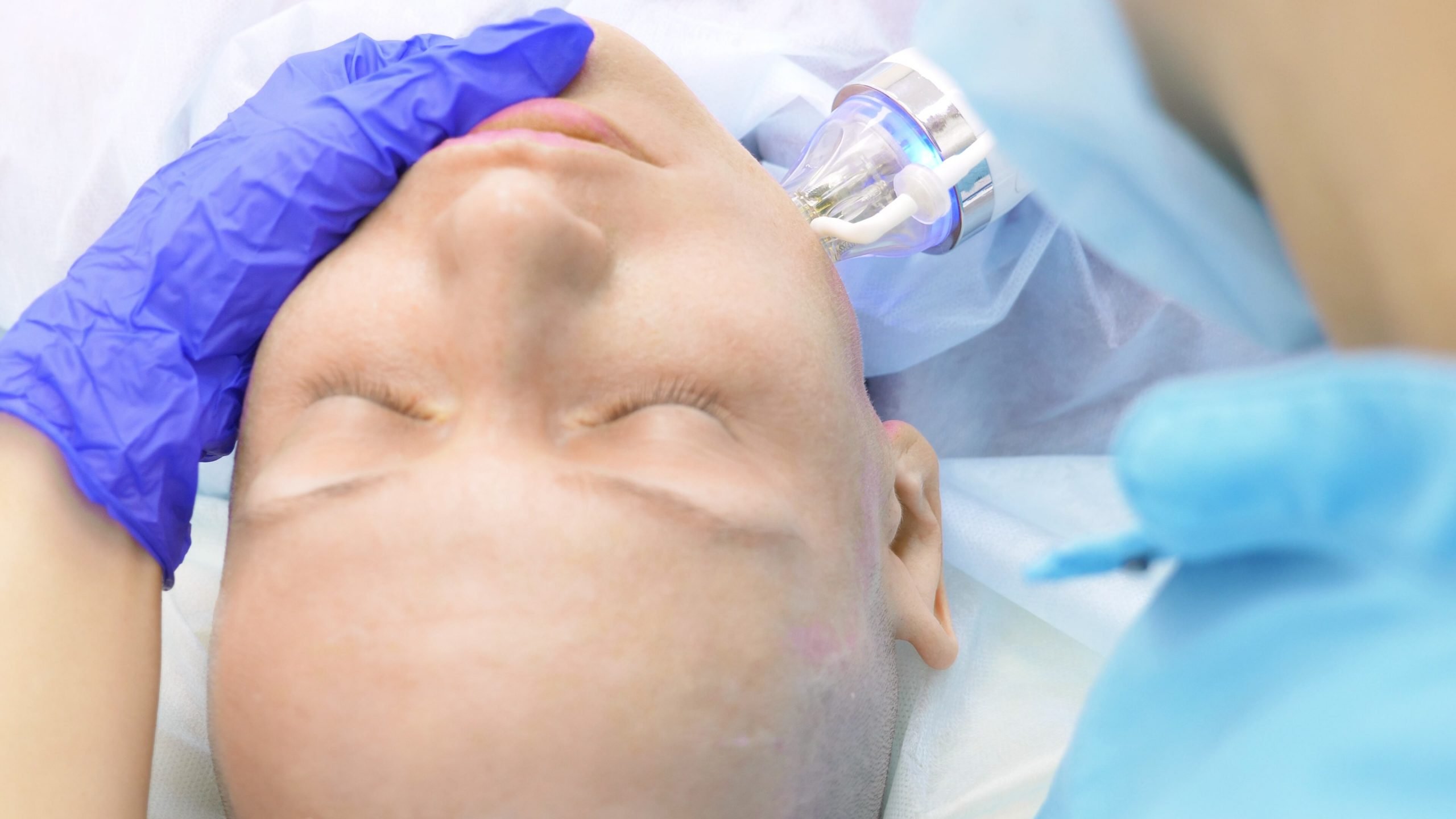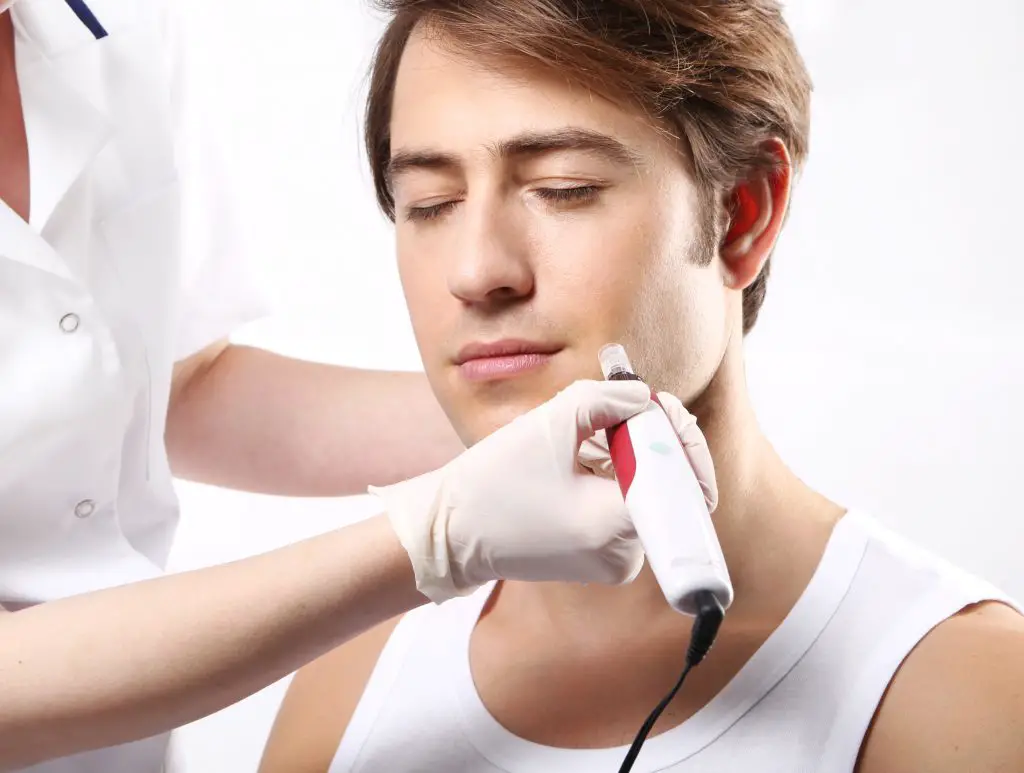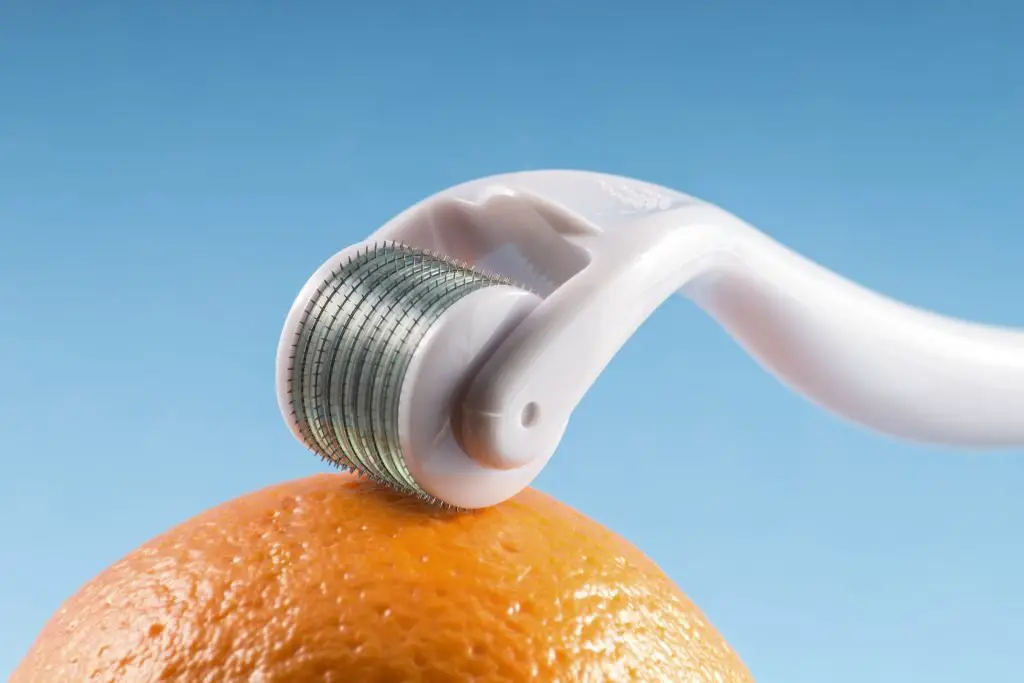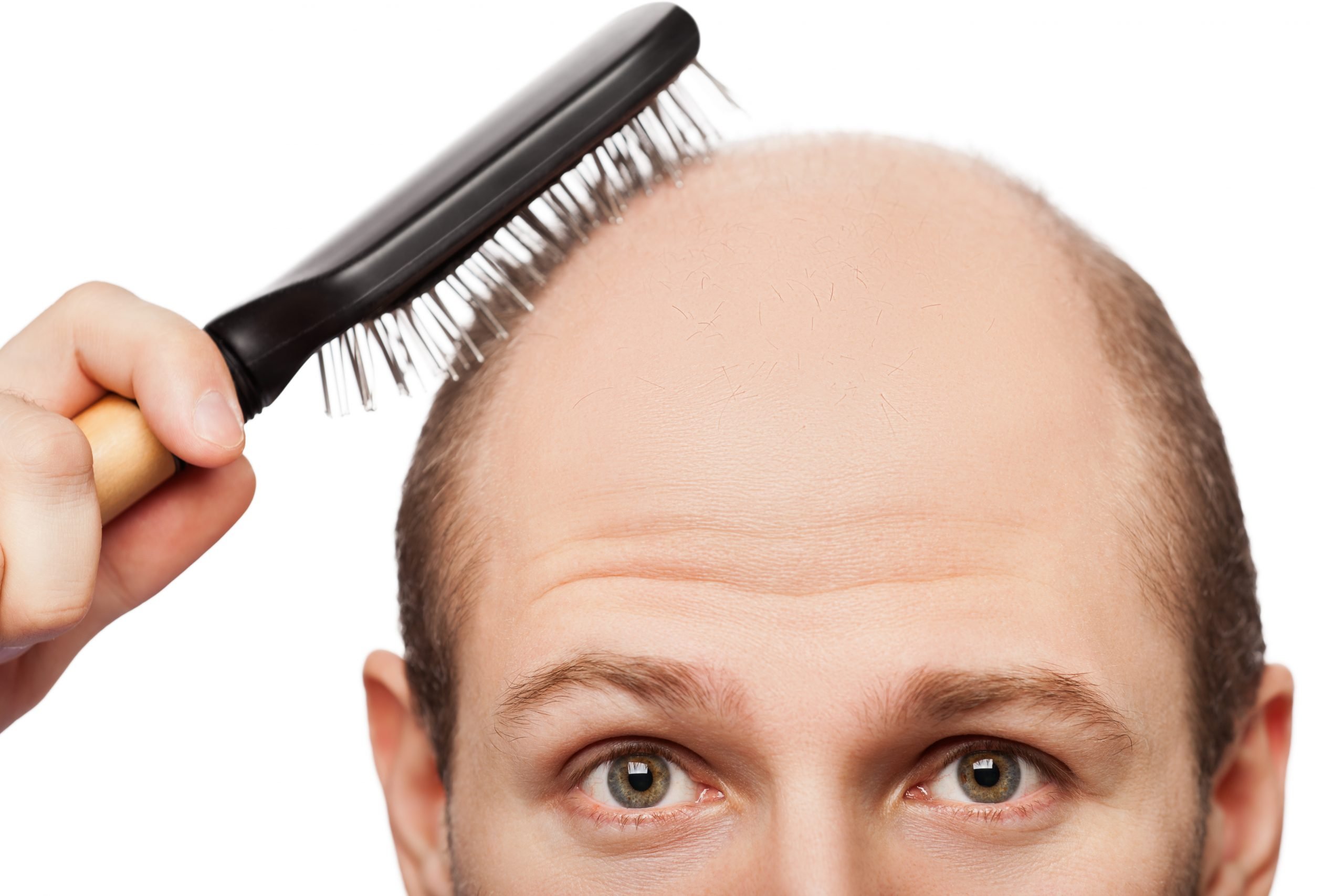
Page Contents
If you’ve been researching hair growth solutions, chances are you’ve read about Microneedles and are curious about whether they actually work or not. Long story short – Microneedling + minoxidil is over four times more effective than minoxidil alone.
Not only that, people who did not respond well to other treatments still saw benefits from microneedling.
If you have been looking for innovative hair loss treatments that don’t involve putting chemicals of some kind on your hair or in your body, then chances are you have at least heard of Microneedling. Microneedling is actually useful for many different things, of which hair loss is just one.
There is a lot to know about Microneedling for your hair, how it works, how to do it, and more. If you are considering using Microneedling on your scalp, this information is all important for you to know. First, however, you are possibly more interested in if Microneedling actually works for your hair.
About Microneedling For Hair Loss
Microneedling is also sometimes called skin needling and can be used on almost any area of your skin. As a cosmetic treatment, Microneedling works by deliberately causing minor skin injuries. Like the name ‘Micro-needling’ implies, Microneedling does this by the use of many tiny needles.
This form of treatment was first used in the 1990s as a way of helping scars fade. Since then, various Microneedling tools have been created using needles of various sizes. These tools all take different but similar approaches to pressing the small needles into your skin.
These tools create tiny micro-injuries in the skin where you Microneedle. When used properly, a Microneedling tool will increase the amount of collagen in your skin. Microneedling your scalp can also help increase the number of stem cells in your hair follicles, causing increased hair growth.
Microneedling also increases the blood going to your scalp. This alone can assist your hair growth. More than that, the increase also assists the absorption of other hair treatments that are applied topically.
Microneedling doesn’t penetrate deeply enough to damage the lower layers of your skin if you are doing it correctly. The light damage stimulates your body to heal and repair that area. The goal is to trick your body into healing more than just the damage done by the needles but to heal whatever is causing your hair loss too.
Studies have also been done to help determine the best frequency of Microneedling is and other factors. One thing all these studies have in common is that they show that Microneedling can really help your hair grow faster.
What’s more, studies show that Microneedling can help with hair loss for anyone who tries it. Some people will get more benefits from Microneedling than others, but most will get satisfactory results.

The Right Microneedling Tool
There are a few different kinds of Microneedling tools. Choosing the right one is largely a matter of preference. There is also the question of how much of your scalp and where on your scalp you intend on Microneedling.
There are three main Microneedling tools, various needle sizes, and different needle counts. The different tools are rollers, stamps, and pens. The needle length has several variations, only some of which are suited for hair loss. Meanwhile, the needle count is the density and how many needles a Microneedling tool has.
The brand of the tool you use is also important to some degree. Cheap Microneedling tools can have brittle needles that break when you try to use it on your scalp. This happening while you are attempting to Microneedle is obviously not something you want to happen.
Finally, keep in mind that the needles will eventually get dull. Eventually, whatever tool you use for your Microneedling will need to be replaced. This is why you may not wish to go with a tool that is too expensive, though the well-made expensive tools for Microneedling do tend to last longer.
Derma Rollers

Derma Rollers are easily the most common tool used to Microneedle. This tool is shaped much like a razor that you might use for shaving. Instead of a razor on the end, there is a small round cylinder that is covered on all sides with small needles.
That said, the fit in your hand will be a vaguely familiar one, and there are a few other advantages to this kind of Microneedling tool. For starters, they are the cheapest and the most comprehensive option for those looking to do their own Microneedling. Rollers are the easiest to get started with as well.
However, using Derma Rollers does come with a few disadvantages as well. The rolling motion can catch what few hairs you may have, causing them to get rolled up with the needles. They also tend to drag across the skin, causing more damage than simply puncturing the skin by going up and down.
Derma Stamps
There are stamps for Microneedling too, and these are nearly as cheap as the Derma Rollers. These stamps are a great place to start, are very simple to use, and are have no small parts that can break or get stuck.
However, getting the right amount of pressure can be a bit harder to do with a Derma Stamp. This method of Microneedling can also wear out your arms a bit as your hands have to be as precise as possible.
Derma Pens
Derma Pens are the most elaborate way to do Microneedling on your scalp. This option is the most expensive of the three main Microneedling options. These also have the most complicated structure and have many pieces that go into them.
The Derma Pens are held much in the same way as an actual pen. Most have some form of setting that allows you to alter the depth that the needles penetrate your skin. This Microneedling tool works by using a spring-loaded automated mechanism. See Dr. Pen Reviews.
Needle Size
The size of the needles on a Microneedling tool can vary widely. Most needles are somewhere in the range of being less than 1 millimeter to a few millimeters in length. Though there are different ways these needles are used, the sizes do stay roughly the same.
Whatever size needle you go with, keep in mind that the goal of Microneedling is to get needles deep enough to encourage healing but not deep enough to cause scarring or other damage. Therefore, if your skin is thicker, you may want slightly longer needles. The opposite is true if you have thin skin.
Most studies on Microneedling are done with tools that have a 1.5mm needle length. However, any Microneedling tool between 0.25mm and 2.0mm are fine for Microneedling for hair loss. Though there are other sizes of Microneedling tools, those are for other Microneedling applications.
Other people believe that needling lengths in the 1.5mm to 2.00mm are too large and should only be used if they are medical-grade needles and used less frequently. The smallest needles that are 0.5mm may be safe to use on a daily basis.
However, there are Microneedling tools that are as small as 0.15 mm, all the way up to 3.0 mm. Finally, you should know that the smaller needle sizes are safer for you to use at home yourself. Larger needles should preferably be used on your scalp only by a professional.

The Advantages
Increasing the amount of collagen in your skin has so many potential benefits. In addition to helping with hair loss, there are also certain anti-aging effects. Microneedling can even help with hair loss caused by alopecia areata.
What is perhaps one of Microneedling’s best features is the fact that it can be used in combination with other hair loss treatments. In fact, when paired with treatments such as Minoxidil, Microneedling can increase the benefits of the other treatment, making it more effective and giving you faster results.
However, Microneedling by itself does not involve any pills, sprays, or creams. This means Microneedling won’t cause any allergic reactions, and it won’t affect your hair coloring, give your hair a bad smell, or affect your medication.
These are all common problems that other hair loss treatments have and that Microneedling does not have. This is a huge advantage for Microneedling and is one of the main reasons why people use this.
If you want, you can use Microneedling on other parts of your body and for other things besides hair loss. Things like stretch marks, scars, and other skin defects can also be helped with Microneedling. This helps you get the most possible out of your Microneedling tool.
The Disadvantages
The first and perhaps most obvious disadvantage of Microneedling is that it hurts. There is no way you can entirely prevent Microneedling from hurting at least a little. If you have a high amount of pain tolerance, then this may not be a concern for you. For everyone else, however, it is a concern.
Some of the more common side effects of Microneedling include bruising, redness, swelling, and, as mentioned, pain. There also may be oozing and, in some cases, Microneedling incorrectly can cause scarring to happen.
The inflammation from Microneedling can last a couple of days afterward. In some cases, the tenderness and sore feeling can last as long as 4 or 5 days. Sometimes this redness is clearly visible, meaning that you will likely want to wear something to cover your head up.
However, whatever you use to cover your tender scalp should be soft so as not to cause added pain. It should also preferably be sterile to some degree so that you don’t give yourself an infection.
Next, although Microneedling can be used with other hair treatments, this is not always recommended. If certain hair loss treatments get into your bloodstream, they can cause damage to your heart, lungs, or other organs.
Therefore, a lot of care is required if you plan on both Microneedling and applying something topically on your scalp. You should never use certain medications like Minoxidil if your skin is broken or damaged. You should preferably wait a day between using your Microneedling tool and applying Minoxidil to your scalp.
Finally, those on blood thinners or with certain medical conditions that cause you to heal slowly should avoid Microneedling. In either of these cases, Microneedling will be less likely to help your hair and more likely to damage your hair cells.
Microneedling Yourself
Many people do Microneedling on themselves at home for various reasons. Doing this hair treatment at home can cost about a third of the price of getting your scalp Microneedled professionally. All you really need for Microneedling is the time and the right tool.
After getting your Microneedling tool, make sure that both your tool and your tool and scalp are clean. Start at the front of your scalp above your forehead and do one section of your scalp at a time. Microneedle each individual section several times with the tool.
While doing this, you should be changing the angle of your tool every few strokes to blanket the whole area. Use your derma tool diagonally and try to keep an even amount of pressure over the whole area. If using a Derma Roller, you may what to wet down whatever hair you do have so that it doesn’t get caught.
If you need to rest your arms, do so at the end of doing a section. It may take practice for you to get the right amount of pressure and to hold the tool, so experiment with how much pressure you feel comfortable with applying.
After you are finished Microneedling the area you want to, be sure to clean and sterilize your Microneedling tool. This sterilization should be done both after you are done and right before you use the tool in case any dirt or germs got on it since you last used it.
Finally, you should keep your scalp where you did the Microneedling as clean as possible for the next few days. Any dirt or pool chemicals should be washed off as soon as possible, and you may need to use a gentle shampoo.
Getting Microneedling Done Professionally

Without the right training, it is hard to tell how much pressure to use, how many times to go over the right area, the right size needles for you, and it can be hard to hold up your arms long enough to really get the back of your scalp.
Doing your own Microneedling at home has its own downsides that may make it not worth it. Mostly it is dermatologists and cosmetic surgeons that have the training needed to do Microneedling for you.
There are licensed Microneedling professionals who are trained in the right way to use Microneedling tools. These professionals know how to maximize the effects of Microneedling and how to minimize the side effects of the treatment.
If you are looking for a professional Microneedler, you should request a consultation with at least a couple of them. During this consultation, you should get treatment cost ideas and see their portfolio. This will help you decide where to go to get your Microneedling done.
Once you arrive for your Microneedling, they will most likely apply some form of topical anesthetic. This is applied about 45 minutes before the application of the Microneedling tool to help reduce the pain of it.
As for how long it takes to actually do the Microneedling part, that will depend on various factors. Generally, Microneedling takes somewhere around 10 minutes or less. Afterward, they may apply a topical balm of some sort to help prevent inflammation or infection before sending you home.
If you are prone to getting certain infections, you may be sent home after Microneedling with a prescribed topical or oral antibiotic. You should take or use this as directed in order to help prevent or heal any infections before they become serious.
How Often To Microneedle
The most debatable part of Microneedling is how often you should do it. In general, Microneedling once a week or once every other week is all most people need. For those who get a lot of swelling and redness when they Microneedle, once every three weeks may be sufficient.
When you first begin Microneedling, you should space out your sessions to let your scalp get used to it some. If your scalp isn’t affected by any redness or anything, you may be able to Microneedle twice a week. Doing Microneedling much more often than that is not really needed, nor is it advisable for most.
In short, how often you use Microneedling on your scalp depends in part on how your scalp handles it. Other than that, the size of the needles also determines how frequently or infrequently you should Microneedle.
Longer needles tend to puncture a little deeper into the skin than smaller needles do. Therefore, Microneedling tools with longer needles should be used less frequently. Also, how hard you press down when Microneedling will also affect how often you should do this.
Finally, those who heal faster can Microneedle their scalp more frequently than those who might heal slower. All in all, if you are in doubt, you should be good with Microneedling once per week. This is the perfect frequency for most people who want to use Microneedling to help with their hair growth.
Microneedling Tips
There are many helpful tips for Microneedling and how you can get the most out of it for your hair. For example, if choosing a Microneedling needle size is too hard, get both sizes. Alternating between a larger and smaller needle size can actually be a good thing.
Then, Microneedling with oils on your scalp can be helpful in a lot of different ways. Microneedling does have the tendency to dry out the skin on your scalp. Applying an oil can help prevent this. Some oils, such as coconut oil, can even help with pain and inflammation.
Lavender oil is soothing when Microneedling, while rosemary oil is another good oil for Microneedling. Peppermint oil is an obvious choice for increasing the circulation to your scalp, though you should dilute it some.
If the pain of Microneedling is too much for you, there are certain numbing creams on the market for this. Also, you can Microneedle over thin fabric so that it doesn’t hurt your scalp as much. Wig caps are great for this but don’t go with fabric that is any thicker than that.
One of the most common mistakes here is using Minoxidil too soon after Microneedling. Though using these two treatments in conjunction with each other is very popular, it is also potentially dangerous. You should wait after Microneedling for at least 24 hours before using Minoxidil.

Is Minoxidil Required to See Hair Growth while Microneedling?
Minoxidil is highly recommended to be used in conjunction with Microneedles as you are much more likely to see positive results from it.
With that said, people have still seen hair growth without it – you are just not going to see the benefits as quickly.
Microneedling is a must in my eyes if you are serious about gaining control over your hair loss. It makes the perfect addition to the other “Big Three” of Hair Growth.

How Do I Get Started with Microneedling?
First, you need to decide which type of Microneedle you want to use. There are three main types of ways to Microneedle. There are rollers, stamps, and pens.
Rollers for Microneedling
Rollers are one of the cheapest solutions, but I recommend this option the least out of the 3. The reason for this is that each needle drags across the face instead of creating small punctures. This isn’t great for your skin. With that said, they’re the easiest to get started with and are the quickest application.
Stamps for Microneedling
Another affordable solution would be stamping. If you are new to microneedling, these are a great place to start. You want to look for 1.5mm in length.
DermaPen for Microneedling
DermaPens are what you’ll want to invest in once you’ve committed to Microneedling. While they are the most expensive of the three options, they do the best job and gives you the ability to change the puncture length easily. When you start utilizing DermaPens I recommend starting at a length of 1.0mm and working your way up to 1.5mm as you become used to it.
Here is a detailed article on How to Microneedle for Beard Growth.
What are the best practices for Microneedling?
First, you should be aware that infection is a risk when it comes to Microneedling. It’s essential to clean your device with alcohol before and after every use.
Secondly, you do not want to over-utilize your device as that doesn’t give your skin time to heal between applications. Depending on your personal tolerance and how quickly your skin heals, you want to use your device up to once a week (although every other week is typically recommended).
Third, you do not want to apply Minoxidil within 24 hours of using your application. This is because after you Microneedle, Minoxidil has a direct route to your bloodstream. By applying it directly after, you are putting your heart at risk.
Fourth, some bleeding is standard, but you do not need to bleed for it to work. Also, it does hurt. It becomes more tolerable after more uses, but always be prepared to feel somewhat uncomfortable during applications.
Final Thoughts
While Microneedling is definitely something that you can use to help your hair, it is not for everyone. Microneedling is not something that is covered by most medical insurances due to being considered a cosmetic treatment.
This can make getting professional Microneedling done way out of the price range of some, costing hundreds of dollars sometimes. However, since some people who do not respond well to other hair loss treatments can get results from Microneedling, it can be well worth it.
Just be sure to watch for infections, which is perhaps one of the more common problems that can result from Microneedling. It is perfectly alright to decide you want a professional to Microneedle your scalp for you for the first few times to decide if it is something for you.
Tired of chasing down hair growth solutions without the results you’re after? Make sure you’re using the 3 hair growth products known to work before experimenting with alternative solutions – you may be surprised with how effective those 3 alone can be.







This is one of the best articles I’ve ever read on the subject. It was a sincere pleasure not being bombarded by advertisements and was extremely informative.
Thank you for taking the time and knowledge to write this article.
Well, here goes, I’m going to try micro needling. And maybe minoxidil, too.(weekly)